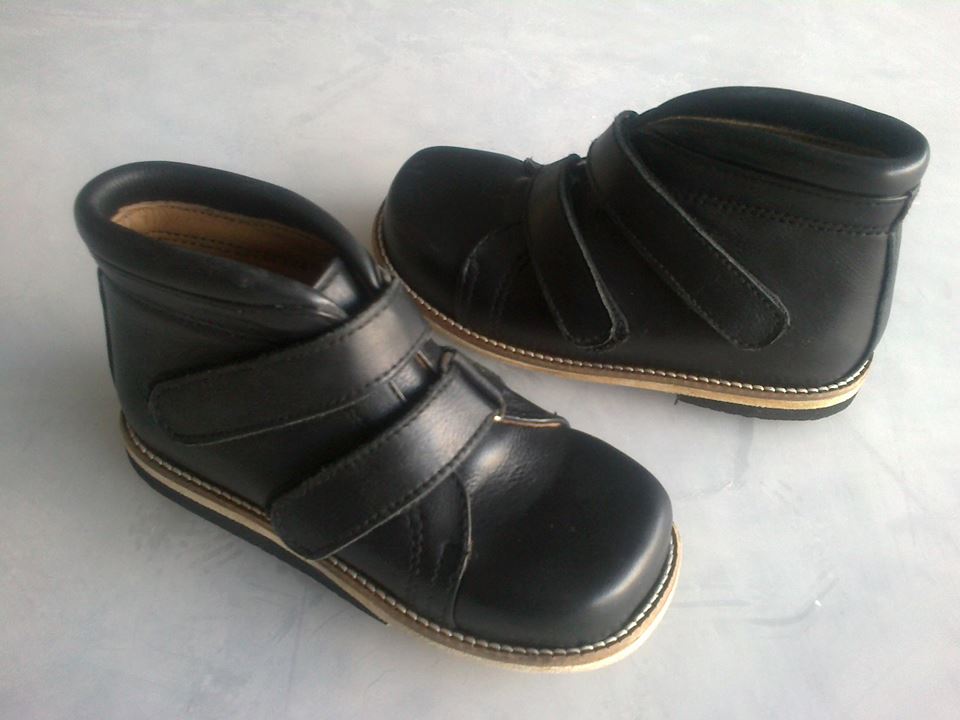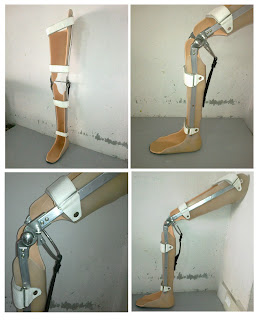Prosthetics & Orthotics from My Care
My Care Prosthetics & Orthotics Medical Center manufacturers of Artificial limbs Prosthetic legs and hands Orthotic Insoles for Flat Feet, Orthopedic Footwear Corrective Shoe Diabetic Footwear Callipers for polio patients knee ankle foot orthosis Boston Brace for Scoliosis Post Opeartive braces Orthopedic Braces milwaukee braces for hyperkyphosis ankle foot orthosis drop foot splint for foot drop club foot splint ctev splint antivarusctev shoe flat feet shoe.
Monday, 16 August 2021
Saturday, 31 July 2021
Wednesday, 30 June 2021
Tuesday, 28 February 2017
Club Foot Correction with Antivarus CTEV Shoe
What is clubfoot?
Clubfoot (also called talipes equinovarus) is a general term used to describe a range of unusual positions of the foot. Each of the following characteristics may be present, and each may vary from mild to severe:
- The foot (especially the heel) is usually smaller than normal.
- The foot may point downward.
- The front of the foot may be rotated toward the other foot.
- The foot may turn in, and in extreme cases, the bottom of the foot can point up.
Most types of clubfoot are present at birth (congenital clubfoot). Clubfoot can happen in one foot or in both feet. In almost half of affected infants, both feet are involved.
Although clubfoot is painless in a baby, treatment should begin immediately. Clubfoot can cause significant problems as the child grows. But with early treatment most children born with clubfoot are able to lead a normal life.
What causes clubfoot?
In some cases, clubfoot is just the result of the position of the baby while it is developing in the mother's womb (postural clubfoot).
But more often clubfoot is caused by a combination of genetic and environmental factors that is not well understood. If someone in your family has clubfoot, then it is more likely to occur in your infant. If your family has one child with clubfoot, the chances of a second infant having the condition increase.
Clubfoot present at birth can point to further health problems because clubfoot can be linked with other conditions such as spina bifida. For this reason, as soon as clubfoot is noticed, it's important that the infant be screened for other health conditions. Clubfoot can also be the result of problems that affect the nerve, muscle, and bone systems, such as stroke or brain injury.
What are the symptoms of clubfoot?
Clubfoot is painless in a baby, but it can eventually cause discomfort and become a noticeable disability. Left untreated, clubfoot does not straighten itself out. The foot will remain twisted out of shape, and the affected leg may be shorter and smaller than the other. These symptoms become more obvious and more of a problem as the child grows. There are also problems with fitting shoes and participating in normal play. Treatment that begins shortly after birth can help overcome these problems.
Club Foot Treatment
Most cases of clubfoot are successfully treated with nonsurgical methods that may include a combination of stretching, casting, and bracing. Treatment usually begins shortly after birth. In clubfoot, the tendons that connect the leg muscles to the foot bones are short and tight, causing the foot to twist inward.
Monday, 30 January 2017
Calipers for Polio Patients (KAFO)
My Care Prosthetics and orthotics Medical Center offers advanced, lightweight knee ankle foot orthosis with intelligent knee joints, allowing the knee to bend during the swing phase of walking and lock securely in stance. Walking freely places a high demand on any bracing system, as the orthosis has to bear the patient’s full body weight when locked. Unlike a traditional fixed calliper, these offer firm stance phase support and a free knee when bringing your leg through in the swing phase of walking. This greatly improves your walking pattern and reduce the amount of energy needed to walk. Knee-ankle-foot orthotics (KAFO) consist of an AFO with metal uprights, a mechanical knee joint, and 2 thigh bands. KAFO can be used in quadriceps paralysis or weakness to maintain knee stability and control flexible genu valgum or varum. KAFO also is used to limit the weight bearing of the thigh, leg, and foot with quadrilateral or ischial containment brim. A KAFO is more difficult to don and doff than an AFO, so it is not recommended for patients who have moderate-to-severe cognitive dysfunction. Each KAFO is custom-made to the specific requirements of the individual. There are numerous design options available that make usage of the Orthosis both functional and comfortable. A detailed examination and assessment of the patient allows us to suggest the best available component combination. A KAFO is a long-leg orthosis that spans the knee, the ankle, and the foot in an effort to stabilize the joints and assist the muscles of the leg. While there are several common indications for such an Orthosis, muscle weakness and paralysis of the leg are the ones most frequently identified. The most common causes of muscle weakness include: • Poliomyelitis • Muscular Dystrophy • Multiple Sclerosis • spinal cord injury
Thursday, 11 September 2014
Lower Limb Prosthesis
When people have the
misfortune of losing their arms or legs due to injury, disease or birth
defects, artificial limbs help amputees get back to their normal functioning to
a certain degree. Cancer, infection and cardiovascular disease brought about by disorders like diabetes are leading illnesses that cause amputation.Recovery from the
loss of a limb can be hard. Sadness, anger, and frustration.
We will help you in your tough time, you may contact us to
schedule for a free evaluation or contact us directly to speak to our knowledgeable staff about your thoughts, questions and concerns. You can set up a
meeting with one of our experienced Prosthetists who can alleviate your fears
and prepare you for what lies ahead all consultations & evaluations are
performed free of charge.
One of the Best Artificial Limbs
Specialists and the most trusted medical center providing Prosthetic and
Orthotic services as well as Foot Care products. We custom design a comfortable
prosthesis from lightweight material and sophisticated technology to fit you
and your lifestyle.
My Care Prosthetics & Orthotics is one of the most trusted Medical Center engaged in offering the best Quality Artificial Limbs.
The artificial limbs from my care are light & flexible to permit easy movement & sufficiently sturdy to support the weight of the body. Our products are manufactured under the guidance of experienced professionals with Sophisticated technologies around the world. Our organization offer completely dependable and highly beneficial services to the patients. We always ensure user-friendly, comfortable and cost efficient devices to the patients. In order to deliver best possible patient satisfaction. Always high quality standards are being maintained at our premises. Each patient is equally valuable and important for us.
The artificial limbs from my care are light & flexible to permit easy movement & sufficiently sturdy to support the weight of the body. Our products are manufactured under the guidance of experienced professionals with Sophisticated technologies around the world. Our organization offer completely dependable and highly beneficial services to the patients. We always ensure user-friendly, comfortable and cost efficient devices to the patients. In order to deliver best possible patient satisfaction. Always high quality standards are being maintained at our premises. Each patient is equally valuable and important for us.
The cost of fitting artificial
limbs depends on the materials used and the degree of
sophistication involved in customizing the product to the user. Depending upon
wear and tear, and also if the person gains or loses weight, the artificial
limb may have to be replaced once in every 3 or 4 years.
My Care Prosthetics and Orthotics
2-1-392/1/3/9, Near Fever Hospital,
Tilaknagar main road, Nallakunta,
Subscribe to:
Posts (Atom)
























































